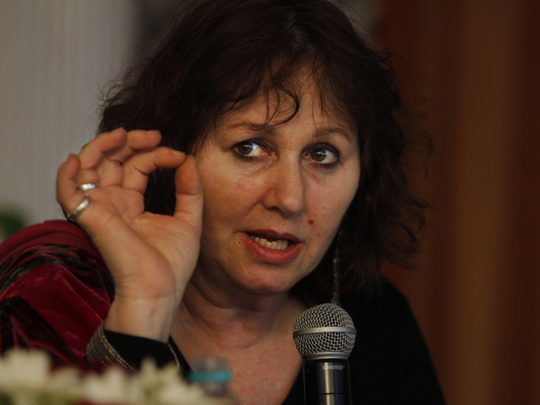
India’s new government has started a war it cannot win over India’s Daughter, a documentary by British filmmaker Leslee Udwin about the horrific gang rape of a student in New Delhi in December 2012.
Last week, the film was banned in India. But it has also created a huge sensation — partly from the very act of being banned, partly because it contains explosive and gut-wrenching testimonies from the case’s major protagonists. Attention has been directed, in particular, to several extended sequences of reminiscence and reflection (though not contrition) from jail by Mukesh Singh, one of the rapists, to whom Udwin was given access by the previous government in 2013.
On March 4, BBC telecast India’s Daughter in Britain, four days ahead of schedule, after India’s Bharatiya Janata Party-led government made clear its objections to the film. The network chose to ignore charges that Udwin had violated numerous technical requirements (both in getting permission to interview the accused in New Delhi’s Tihar Jail and in making commercial use of the footage) and that the film contained material that glorified violence against women.
Behind the government’s stance, though, was the unmistakable sense that the film was an embarrassment to the nation and that it was using a thin carapace of legalistic reason to try to suppress a PR disaster. The result is that many Indians are more embarrassed about their government’s reaction than they are about the film.
After all, it is utterly futile to ban a film — a cause on which the government will now expend vast amounts of energy, much of it to the end of further publicising what it wants suppressed. And sadly, the line that the film is an attempt to malign the country’s reputation — in the words of the Indian Minister for Parliamentary Affairs, Venkaiah Naidu, it was “a conspiracy to defame India” — replicates, at the level of state discourse, the general attitude of Indian society to rape, which is either that the victim in some way invites the crime upon herself or (at best) that she should attempt to find the legal redress due to her without blaming society for its pervasive misogyny and indulgence of the status quo.
Like thousands of other Indians, I saw the film on YouTube during the few hours when it was available. Although, as many people have already remarked, it makes no new or surprising points about gender violence, it is lucidly made and fairly comprehensive. It carries the tremendous force of the moving image: That of the animated (or resigned) human face. Principally, these are the faces of the parents of the victim, as well as that of the assailant with whom Udwin was able to record an interview.
Many people in the debate — including the Indian government — have chosen to focus on the most shocking part of the film: The passage where rapist Mukesh Singh argues that the victim, who later died of her injuries, had invited the crime upon herself by being out on the streets late at night.
But in truth, the narrative logic of the film itself does not place an undue amount of emphasis on this combustible confession. In fact, before we hear Singh speak to the camera, we encounter the victim’s parents, who recount, movingly, that when their daughter was born, their neighbours were surprised at their immense happiness, “as if it were a boy”, and recount their enormous sacrifices to support her dream of becoming a doctor by spending, at the girl’s own insistence, the money put aside for her wedding.
In these haunting moments, we feel the weight and gravity of the couple’s considered and peaceful disengagement from the age-old structures of patriarchy, yet without any apparent rancour at the world’s iniquity. By the time we get to the rapist’s insistence that he was only acting out of the natural logic of life (and, just as shockingly, that of the two defence lawyers that “if you take your diamond out on the street, the dog will definitely attack it”), the very nature of misogynistic bad faith and power play is exposed. The most humble of this world, it would appear, have the strength and moral courage to disagree with ideas that the more powerful insist are natural and inescapable.
All this happens within the first seven minutes of India’s Daughter and it sets the tone for the enormous diversity of explanations and rationalisations, analogies and metaphors, that follow: Arguments that read the viewer as surely as the viewer reads them and thereby vex, confound, sadden and titillate — the point of any considered work of reporting.
Udwin stoutly replied, in a piece on NDTV’s website, to the Indian government’s action by imploring Prime Minister Narendra Modi to overturn the ban. “Whoever is behind this — please see the film and then come to a conclusion,” she wrote. She found support in many quarters, including from columnist Shobhaa De, who remarked it should be “compulsory viewing” for Indians.
In recent days, many other sensible voices have articulated their problems with Udwin’s film — with its politics, its emphases, its narrative technique (some Indian feminists have, with good reason, seen the very title as problematic). But by claiming that the widespread circulation of Mukesh Singh’s testimony amounts to a glorification of violence against women, the government has revealed something that is true of most censorship: That it is more outraged by the representation of reality than it is by that reality itself.
Even a dignified silence on the issue of the film’s telecast and calculated self-restraint over its inevitable circulation in India would have done the new regime more credit. Udwin’s lapses in this matter are technical and procedural; those of the Indian government, strategic and, sadly, moral.
— Washington Post
Chandrahas Choudhury is a novelist based in New Delhi.








